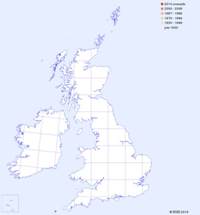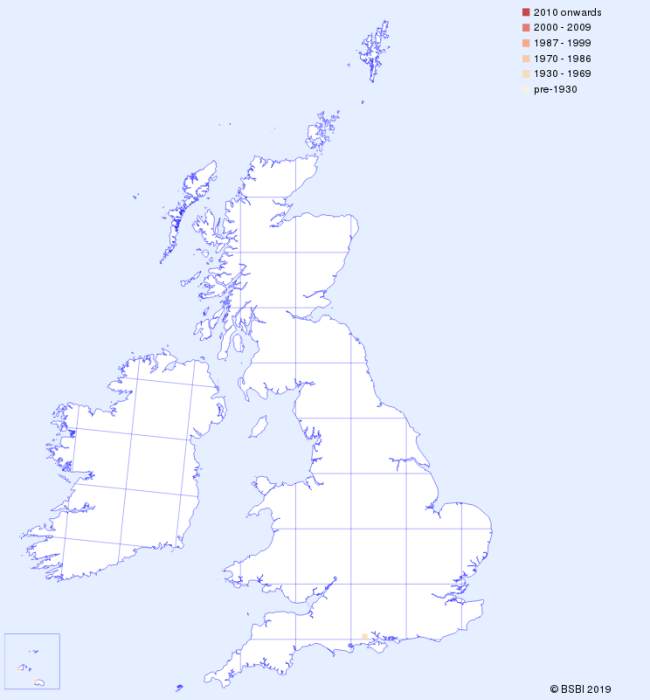This beautiful wildflower is now extinct in Britain. Always rare, and localised in the Channel Islands and in the New Forest, it was first recorded near Lyndhurst in Hampshire in 1840. Flowering of Summer Lady's-tresses was unreliable at best, but the real decline began in the 20th Century, and the last possible sighting was in 1959. Occasionally there are rumours that the plant has reappeared in Hampshire, although there have been no official reports. The main cause of its demise was habitat destruction, and in particular land-drainage and afforestation; however, there is no doubt that the collecting of plants was also a major contributor to the disappearance of Spiranthes aestivalis from Britain. It is still possible to see this orchid in parts of Europe, but Summer Lady's-tresses is in steep decline throughout its range and has become extinct in Holland and Belgium.
| Distribution Map | Key Features | |
 |
Records for Summer Lady's-tresses from BSBI are shown on the map with most recent in front. (Hover the mouse over the small map to expand it.) |
Plant: 10 to 20cm in height; stem yellowish-green and sparsely hairy towards the tip. |
Image Gallery for Summer Lady's-tresses Spiranthes aestivalis
| Pollination | Taxonomy & Hybrids |
Little is known about pollination but, as the flowers are scented, it may be that they are pollinated by night-flying moths. This plant can reproduce vegetatively from small lateral buds that form at the base of the stem. |
The specific name aestivalis means 'Summer'. |
Articles about Summer Lady's-tresses in JHOS
